Leonid Koralov - Theory of Probability and Random Processes
Here you can read online Leonid Koralov - Theory of Probability and Random Processes full text of the book (entire story) in english for free. Download pdf and epub, get meaning, cover and reviews about this ebook. City: Berlin;Heidelberg, publisher: Springer, genre: Home and family. Description of the work, (preface) as well as reviews are available. Best literature library LitArk.com created for fans of good reading and offers a wide selection of genres:
Romance novel
Science fiction
Adventure
Detective
Science
History
Home and family
Prose
Art
Politics
Computer
Non-fiction
Religion
Business
Children
Humor
Choose a favorite category and find really read worthwhile books. Enjoy immersion in the world of imagination, feel the emotions of the characters or learn something new for yourself, make an fascinating discovery.
- Book:Theory of Probability and Random Processes
- Author:
- Publisher:Springer
- Genre:
- City:Berlin;Heidelberg
- Rating:4 / 5
- Favourites:Add to favourites
- Your mark:
Theory of Probability and Random Processes: summary, description and annotation
We offer to read an annotation, description, summary or preface (depends on what the author of the book "Theory of Probability and Random Processes" wrote himself). If you haven't found the necessary information about the book — write in the comments, we will try to find it.
Leonid Koralov: author's other books
Who wrote Theory of Probability and Random Processes? Find out the surname, the name of the author of the book and a list of all author's works by series.

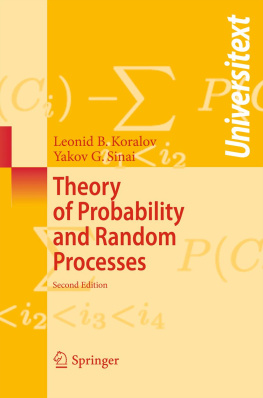


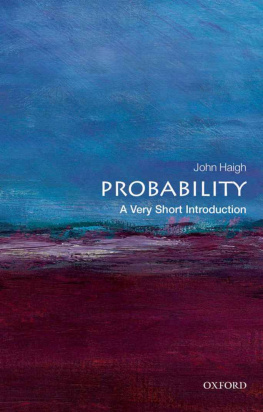
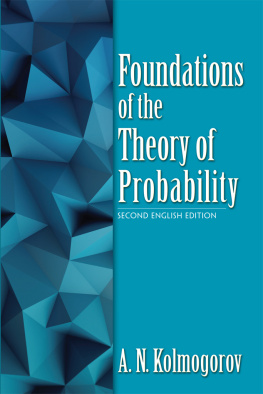


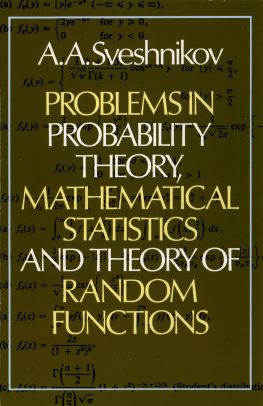
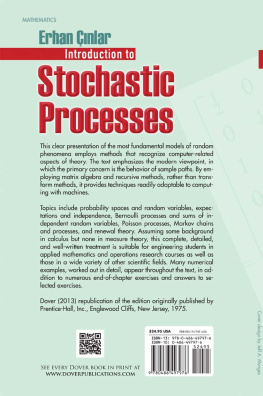
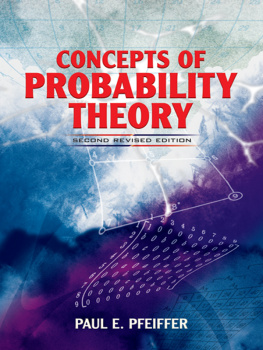
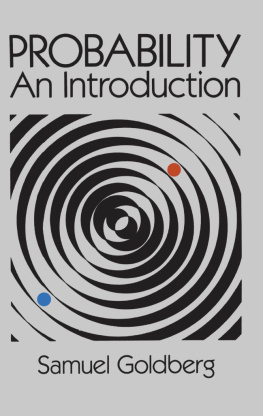
 and the set consisting of sequences
and the set consisting of sequences  of length
of length  , where
, where  for each
for each  . In applications,
. In applications,  is a result of n statistical experiments, while
is a result of n statistical experiments, while  is the result of the i -th experiment. It is clear that
is the result of the i -th experiment. It is clear that  , where
, where  denotes the number of elements in the finite set
denotes the number of elements in the finite set  . If
. If  , then each
, then each  is a sequence of length n made of zeros and ones. Such a space
is a sequence of length n made of zeros and ones. Such a space  can be used to model the result of n consecutive tosses of a coin. If
can be used to model the result of n consecutive tosses of a coin. If  , then
, then  can be viewed as the space of outcomes for n rolls of a die.
can be viewed as the space of outcomes for n rolls of a die. is the space of all functions from I to X .
is the space of all functions from I to X . and
and  is a finite set, then each
is a finite set, then each  is a configuration of zeros and ones on a bounded subset of d -dimensional lattice. Such spaces appear in statistical physics, percolation theory, etc.
is a configuration of zeros and ones on a bounded subset of d -dimensional lattice. Such spaces appear in statistical physics, percolation theory, etc. ). In order to model this game, define
). In order to model this game, define  . Let
. Let  consist of sequences
consist of sequences  of length n such that
of length n such that  for
for  . It is easy to show that
. It is easy to show that  .
. . If is interpreted as the space of possible outcomes of an experiment, then the probability of A may be interpreted as the likelihood that the outcome of the experiment belongs to A . Before we introduce the notion of probability we need to discuss the classes of sets on which it will be defined.
. If is interpreted as the space of possible outcomes of an experiment, then the probability of A may be interpreted as the likelihood that the outcome of the experiment belongs to A . Before we introduce the notion of probability we need to discuss the classes of sets on which it will be defined. of subsets of is called an algebra if it has the following three properties.
of subsets of is called an algebra if it has the following three properties.  .
. implies that
implies that  .
. implies that
implies that  .
.